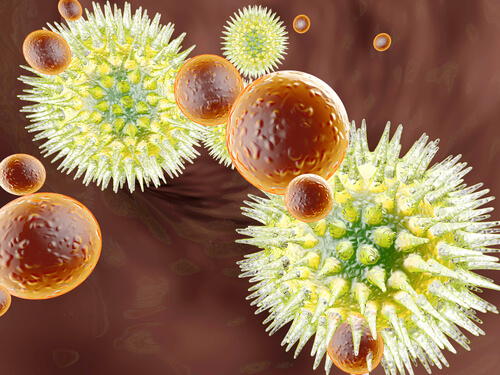
While many homeowners clean their homes regularly, they forget about the air ducts. This is easy to do since it is above their heads and out of sight. While the dirt and grime building up in these ducts may remain unseen by homeowners and their guests, they will eventually feel their effects. There are a variety of bacteria which may be present in your air ducts, and it is important to understand how they affect you and what must be done to get rid of them.
The type of fungus that will most commonly appear in air ducts is mold. This mold prefers environments which are humid and warm, with lots of dirt present. Once it appears in your air ducts, it will begin placing spores in the air, which will then spread. Whenever the HVAC is activated, these spores can be distributed through the air ducts with ease, and homeowners and any guests present will breathe them in. Over time, the air quality of the home will be severely degraded.
Bioaerosols is a term used by scientists to describe microscopic organisms which can move through the air. Examples of such Bioaerosols include dust mites, bacteria, amoebas, and pollen and plant fragments. Viruses and bacteria in particular are dangerous because they can lead to serious health problems such as pneumonia, which can become life threatening, as well as allergies. Bioaerosols can cause an allergic reaction in both the respiratory system and the skin. Those who have these reactions may display rashes, asthma or runny noses.
The air ducts in your home are usually found near the ceilings, wall, attic or crawl spaces. They will typically have a shape which is square, tubular or round, and are responsible for the delivery or cool or warm air for temperature regulation. Vents are used to release this air in various parts of the home. Because of the location of these air ducts many busy homeowners don’t pay much attention to them. Air conditioning systems and heaters will collect dust when not cleaned, and will collect fungi and bacteria which will then be transferred to air ducts, and from there will be sent through vents and be inhaled by anyone in the home.
When a sufficient amount of bacteria has collected in your air ducts, there are a number of warning signs to watch for. These signs will typically involve health or breathing issues. Both children and the elderly are especially susceptible to these symptoms, which include sinus congestion, difficulty breathing, irritation of the nose or throat, eyes which are watery, red or burned. Other warning signs that your air ducts may have lots of bacteria include headaches, hay fever or muscle aches.
Cleaning the air ducts regularly is not something that should be taken lightly. They directly affect the air you breathe which ultimately affects your quality of life. Too many homeowners ignore them until they have allergies or other problems, but regular air duct cleaning can help avoid this.